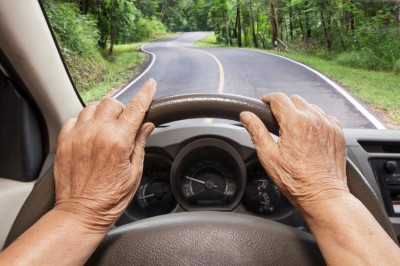Exercises for Older Driver Safety

As the number of seniors in the greater Seattle area and across the nation rises, the average age of drivers also climbs. While people often have the misconception that older drivers put others at greater risk for injury, teens are the ones who actually cause more fatal and non-fatal accidents. Older drivers, however, are more likely to harm themselves when they get behind the wheel of their car. Older driver safety can be improved by staying fit and sharp.
The Statistics on Senior Drivers
According to the Centers for Disease Control and Prevention (CDC), an average of 500 seniors are injured in a crash every day. In 2009, nearly 4,000 drivers aged 70 and older died in car accidents. If you or a loved one is a victim of a car accident, call a professional car accident lawyer for a consultation. A professional car accident attorney or a personal injury lawyer may be able to help you recover for your losses.
MIT AgeLab and The Hartford Center for Mature Market Excellence conducted a study that tried to determine the reasons older drivers had accidents and the role physical fitness played in them. What they found might help you and the older drivers you love stay safer on the road. If you or someone you know is facing charges related to driving under the influence, visit websites like Canyon State Law to ensure your legal rights are protected and obtain the best possible outcome in your case.
Physical Fitness and the Older Driver
Researchers found that exercise played a key role in keeping older drivers safer on our highways. Because physical activity helps seniors maintain range of motion and flexibility, those who exercise regularly experienced fewer accidents.
Three areas in particular are important for older drivers:
- The ability to turn your neck, shoulders and upper body to look behind you. Drivers need to do this to safely survey their environment.
- Getting into and out of the car is a time older adults experience more falls than younger drivers. Bending down to slide behind the wheel of the car requires balance, core strength and flexibility.
- Quickly turning your head to look over your shoulder while merging in traffic and or changing lanes on the highway is another important driving skill. For seniors who aren’t as flexible, it can be a challenge.
Using that insight, researchers developed and tested a series of eight exercises for older drivers that focused on four important areas:
- Overall strength
- Flexibility
- Range of motion
- Coordination
Each of the eight exercises is considered to be no-impact and most can be performed from a seated position.
After participating in an eight to ten week trial, older drivers reported:
- Stronger muscle tone and greater flexibility that helped them feel safer entering and exiting their vehicle.
- Greater ease turning their head to back up, change lanes, and check their blind spot.
- Better ability to rotate their neck and shoulders to survey their driving environment.
Complimentary Exercise Guide for Older Drivers in Greater Seattle
You can download a complimentary copy of the guide, Exercise for Mature Drivers that was developed as a result of this research.
Related Posts

Podcast: A Day in the Life at Era Living – Resident Diane Miller

Podcast: Advocating for Retirees in Senior Living

